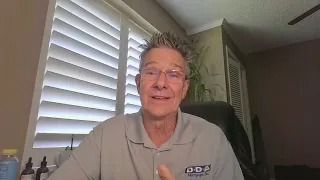reverse purchase financing; The fnancing option no one is talking about
Did you know that in 2022, both younger and older Baby Boomers made up the largest generation of American homebuyers? This cohort accounted for 1,950,000 properties — equating to 39% of total homes purchased!1
With over 12,000 Americans turning 65 every day in 2024, this burgeoning market will undoubtedly continue to bring more buyers and sellers to the table over the next decade.2 However, these potential clients will also face challenges — namely market volatility, unpredictable interest rates and limited purchasing power due to increasing debt.
That’s where reverse purchase financing comes into play, the funding option specifically designed for older Americans. With this option, older homebuyers can increase their purchasing power with fewer financial worries and limitations as they move towards or through retirement. For real estate professionals, this option presents an opportunity to capture more sales.
Yet staggeringly few are aware of its existence.
What is reverse purchase financing?
Established in 2009 by the Department of Housing and Urban Development (HUD), reverse purchase financing or “Home Equity Conversion Mortgage (HECM) for Purchase loan program” allows those aged 62 and older to purchase a new house or certain condos by combining a one-time investment of their funds (such as profits from the sale of their current home) with reverse mortgage loan proceeds to complete the purchase. They own the home with their name on the title, as with any mortgage, traditional or reverse.
But unlike financing with a traditional mortgage, monthly principal and interest payments are not required on the loan, so long as the homeowner keeps up to date with real estate taxes, homeowners’ insurance and property maintenance. As long as the buyer complies with these ongoing loan obligations, a HECM for Purchase loan doesn’t have to be repaid until a maturity event, such as when the home is sold or is no longer considered their primary residence.
The down payment percentage required on the loan is higher than with a traditional mortgage (usually 60% to 65% of the cost of the new home)3 and the owner does build less equity — but unlike a traditional loan, the borrower is not at risk of owing more than the home is worth at the time of repayment when the home is sold due to its non-recourse feature.
The HECM for Purchase is not a refinancing tool; it is not akin to a Home Equity Line of Credit (HELOC). Rather, it’s an age-specific, federally-insured loan option that helps eligible buyers aged 62+ make a residential purchase while retaining more of their money than they could with a conventional mortgage or an all-cash purchase, generally leaving their savings and assets intact for retirement and any heirs.
In addition to improved cash flow throughout the life of the loan due to the optional repayment feature,4 buyers also enjoy additional spending power with reverse purchase financing. They are able to maximize their cash investment on a new home and more comfortably afford an upscale home or a property in a more desirable location — whether it be closer to family or in a luxury housing development with additional amenities.
Very few are reaping the benefits, but they keep on coming
Reverse purchase financing can help older homebuyers improve their financial flexibility when purchasing a new home and help real estate professionals expand their business within the fast-growing segment of the market. Yet despite this, it remains a niche product that is largely misunderstood or maligned, and quite frankly, unknown to the general public.
Consumers who are introduced to the HECM for Purchase loan option are often skeptical at best, with many thinking it’s too good to be true. But the fact is, most people simply don’t know that a new home can be purchased with a reverse mortgage. And after years of advertisements and TV commercials promoting the benefits of better-known reverse mortgage loan uses like continuing to live in your current home while tapping your home equity,4 who could blame them?
According to the Federal Housing Administration (FHA), there were only 2,063 HECM for Purchase loans endorsed in 2022 — that’s less than 1/10th of 1% of homes sold last year.5 But even as professionals and consumers continue to leave the benefits of reverse purchase financing on the table when transacting, advancements to the now 15-year-old program continue.
Recently, Interested Party Contributions (or seller concessions) have been allowed with HECM for Purchase loans. This is a huge boon for the program as seller concessions have not been allowed within the FHA-insured program since its inception.
With this latest enhancement, homebuyers aged 62+ can participate in seller concessions for up to 6% of the sales price toward borrower origination fees, other closing costs, prepaid items, and discount points. The 6% limit also includes payment of the Up-Front Mortgage Insurance Premium (UFMIP).
“The lack of seller concessions may have been one of the biggest reasons that reverse purchase financing has not become more mainstream and widely promoted to and by the Baby Boomer generation,” said Rob Cooper, National Purchase and Builders Sales Leader for Longbridge Financial. “We in the industry are very hopeful that this will be an eye-opener, especially for real estate agents and builders to start recommending this product to clients more regularly.”
The times they are a-changin’
The real estate industry has flourished over recent years due to record-high home appreciation, lower interest rates and motivated clients — but as they say, nothing lasts forever. In fact, a veritable upheaval is headed for the housing market already.
According to financial analysts, a “Silver Tsunami” is headed our way, beginning in 2024, as millions of homeowners aged 50 and older make the move to downsize as they inch closer to retirement.6
“The truth is the real estate industry hasn’t really needed to learn about this financing option over the past decade. We have experienced one of the longest ‘seller’s markets’ in our country’s history, so there wasn’t an immediate need for real estate professionals to educate themselves on financing tools beyond traditional mortgages or all-cash transactions,” Cooper said.
“They have been able to reach sales goals with relative ease for over a decade. But economic forecasts and housing market predictions suggest that businesses need to be prepared for another shake-up in the near future. And reverse purchase financing may finally find its rightful place within these industries,” he continued.
The bottom line
The reverse mortgage (HECM) for purchase program was designed to help older Americans buy a more suitable home in retirement, while still conserving cash and assets for future expenses.
And as an added bonus, the program can help real estate professionals turn more shoppers into buyers and close the gap on aging fence-sitters who are hesitant to begin the home buying process all over again in retirement, all while the U.S. stares down the barrel of a considerable economic downturn.
It begs the question, “When will more real estate agents and builders begin recommending reverse purchase financing to more eligible American seniors as a viable, strategic funding option to buy the home of their dreams in retirement?”
The reverse industry has been working hard for years to educate real estate agents, builders and loan officers on the advantages of reverse purchase financing, and Longbridge Financial, LLC is making strides in expanding educational efforts.
Have A Question?
Use the form below and we will give your our expert answers!
Reverse Mortgage Ask A Question
Start Your Loan
with DDA todayYour local Mortgage Broker
Mortgage Broker Largo See our Reviews
Looking for more details? Listen to our extended podcast!
Check out our other helpful videos to learn more about credit and residential mortgages.





